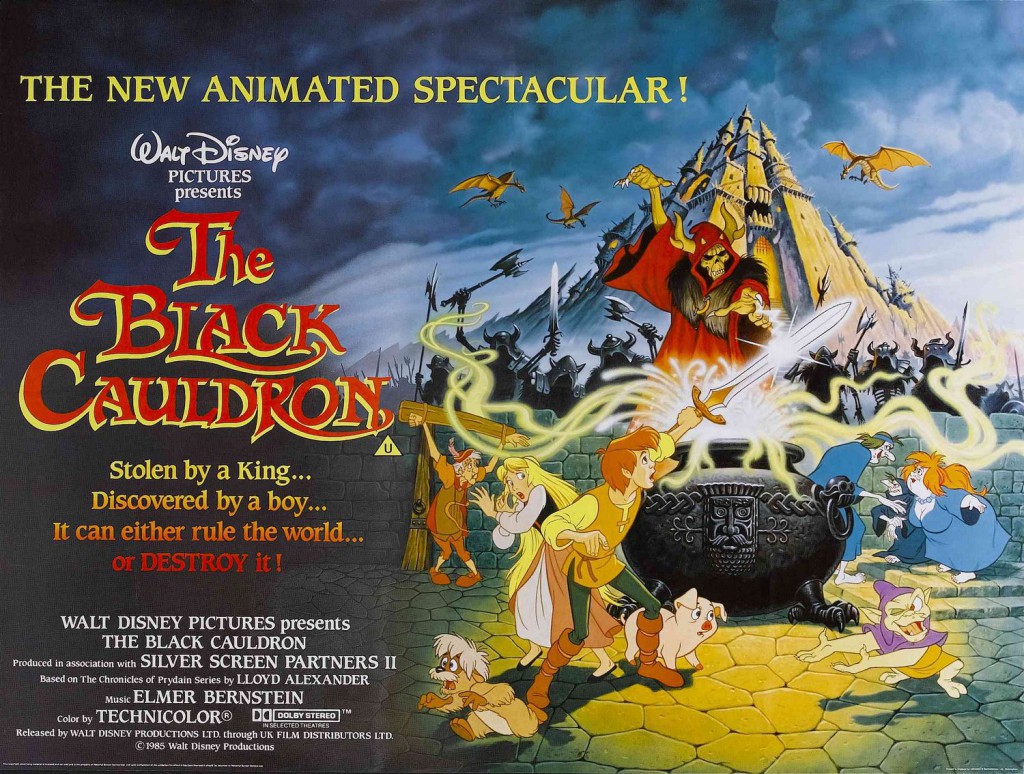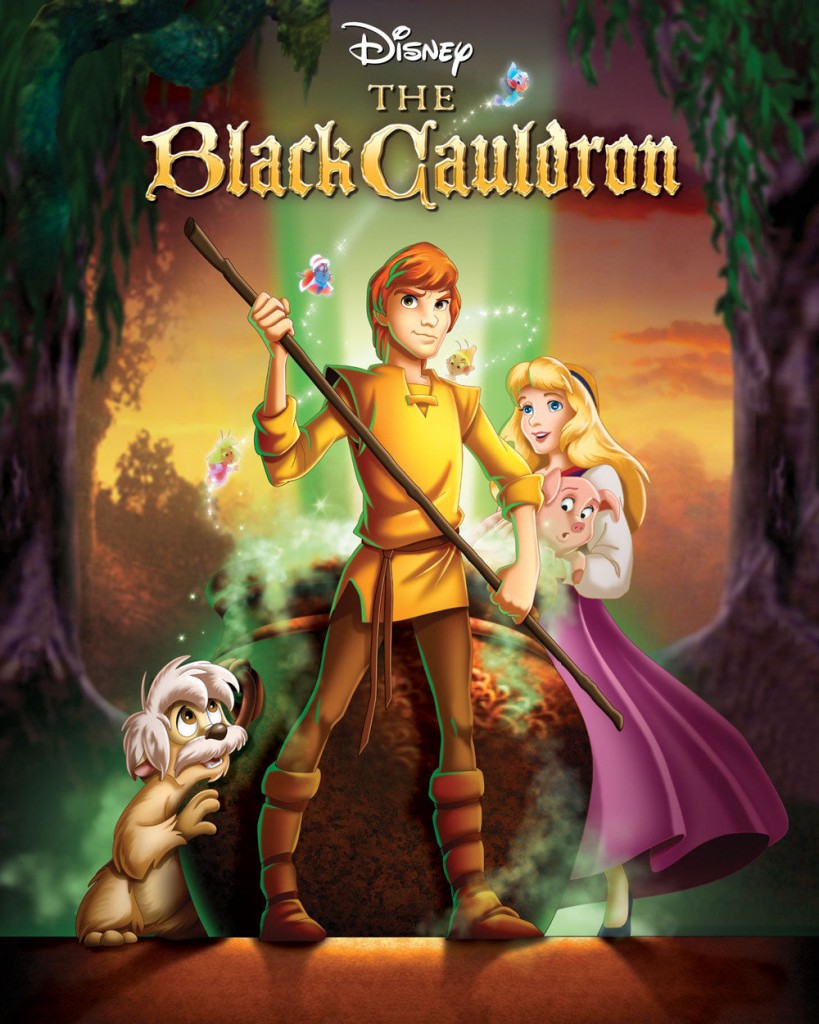Why You (and D23) Should Revisit The Black Cauldron
There were a lot of complaints about the D23 Expo this year and, while I could have done without the long lines and the inefficiencies, my biggest gripe was the complete lack of any acknowledgement of The Black Cauldron which celebrates the 30th anniversary of its release this year. And while I can’t really argue that it is as important as Fantasia’s 75th or Disneyland’s 60th, I think that the film deserves some attention, especially from the members of Disney’s official fan club.
Let me start off by admitting that The Black Cauldron is a flawed film. It is never quite able to be what it wants to be — one of the great, epic, fantastical tales of heroism. And there are several reasons why this likely the case. Made during a transitional period at Disney Animation, the film is the product of a studio in the midst of an identity crisis. As such, the final product, infamously, aggressively and noticeably edited by Jeffrey Katzenberg very late in production, offers us a so-so villain, an uneven plot, and what Ollie Johnston and Frank Thomas have identified as an “overly somber” tone. However, to dismiss the fantasy on account of its failings is really to be missing out on something remarkable and special.
The primary reason that you should revisit The Black Cauldron is the strength of the source material. Each of the five novels in Lloyd Alexander’s The Chronicles of Prydain is a remarkable work, telling the story of the pig keeper Taran and his companions with grandeur, humor, tragedy, romance, and excitement. His work, which is arguably as powerful as J.R.R. Tolkien’s, excels mostly because of the strength of its characters, which are believable, relatable and endearing.
The greatest strength of the film is that it maintains the essence of many of Alexander’s characters. Like all good fantasy heroes, Taran is eager, but unsure, willing to face great dangers, but ultimately seeking to discover himself. His struggles mirror our own life journeys. The princess Eilonwy offers the audience a fantastic female character, who is at once dainty and powerful. Refusing to be dismissed as “just a girl,” she is daring, mysterious and consistently challenging the hero with her wit and tenacity all the while maintaining a vulnerability that makes her truly human. Fflewddur Fflam is a loyal but less confidant sidekick. A traveling bard with a magic harp that tolerates none of his braggadocio, he is lovable and provides great comic relief. Gurgi is a humanoid creature who grows from a selfish coward to a heroic and loyal friend. While characters like Gurgi are often flat, he is at different times throughout the story, menacing, silly, loving, pitiable and noble. And while the contrived ending of the film, robs him of a Bing-Bongesque moment of self-sacrifice, he remains one of the most engaging aspects of the movie. These personalities alone in The Black Cauldron are entertaining, and you will carry them with you much longer than you will memories of the film’s problems with story and tone.
Another reason why you should revisit The Black Cauldron is the production value which is pretty impressive. The soundtrack is rich and vibrant, often telling the story better than the dialogue. As someone who has no training in music and is often more attentive to the characters and plot of a movie, I find this soundtrack remarkably affective, powerfully present and rarely overbearing. Similarly, the visuals are resplendent. Distinct from almost every other feature in the Disney canon, the world of The Black Cauldron is consistently rich, dark and mysterious. The film is so hauntingly beautiful and engaging that it is hard at times not to get lost in it. Among the most notable scenes is one in which Taran and Gurgi are approaching the castle of the film’s villain, The Horned King. The red, ominous skies, the characters’ bodies reacting to the wind and the lightning coupled with music that shifts seamlessly from a mood of terror to one that accentuates Gurgi’s fear and weakness creates an impact that is unlike that of any experienced in any other Disney film.
In fact, that uniqueness is another reason why Disney fans should be interested in The Black Cauldron. This film’s significant departure from what most of us would consider the Disney formula not only makes it cool and different but also provides the perfect opportunity for some really special conversations and diverse experiences that might have happened in Anaheim this summer. What might this film have looked like with the 15 minutes or so was that was cut so unabashedly? What changes might the now more experienced creative team have made to the film if they could go back in time? What would a The Black Cauldron Kingdom Hearts level look like? How cool would it have been to have some limited edition expo exclusive action figures or to get your picture taken with “long lost friends” Taran and Eilonwy? I think there are a ton of opportunities here.
Again, I’m not suggesting that the film does not have problems, because it does. I am suggesting, however, that The Black Cauldron is certainly worth your time as a movie that will provide you not only with a truly engaging experience but also, as it did for me when I was a boy, a glimpse into an amazing world and series of books that really ought to be on your reading list. I hope you will check it out and that we’ll all be ready for 40th anniversary panel at the D23 Expo in 2025 (with or without the action figures).


